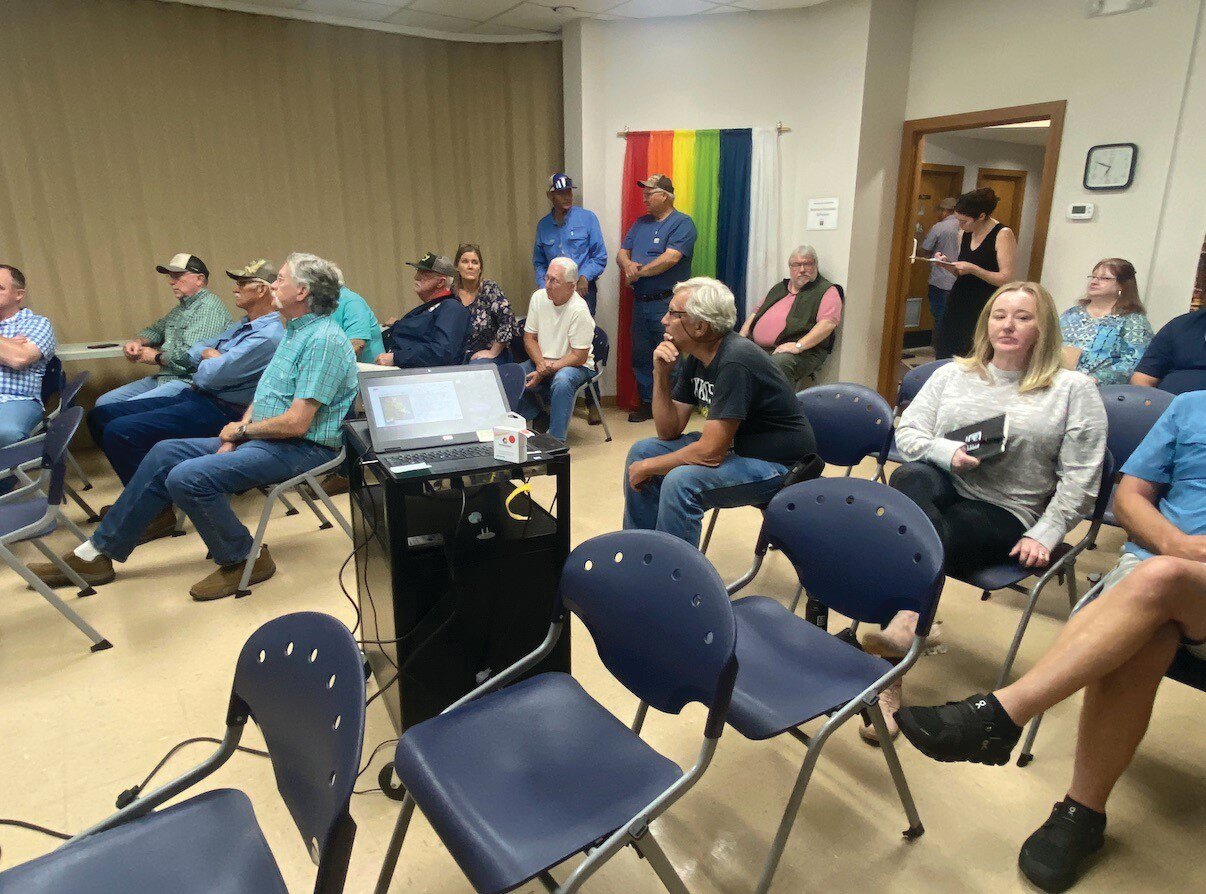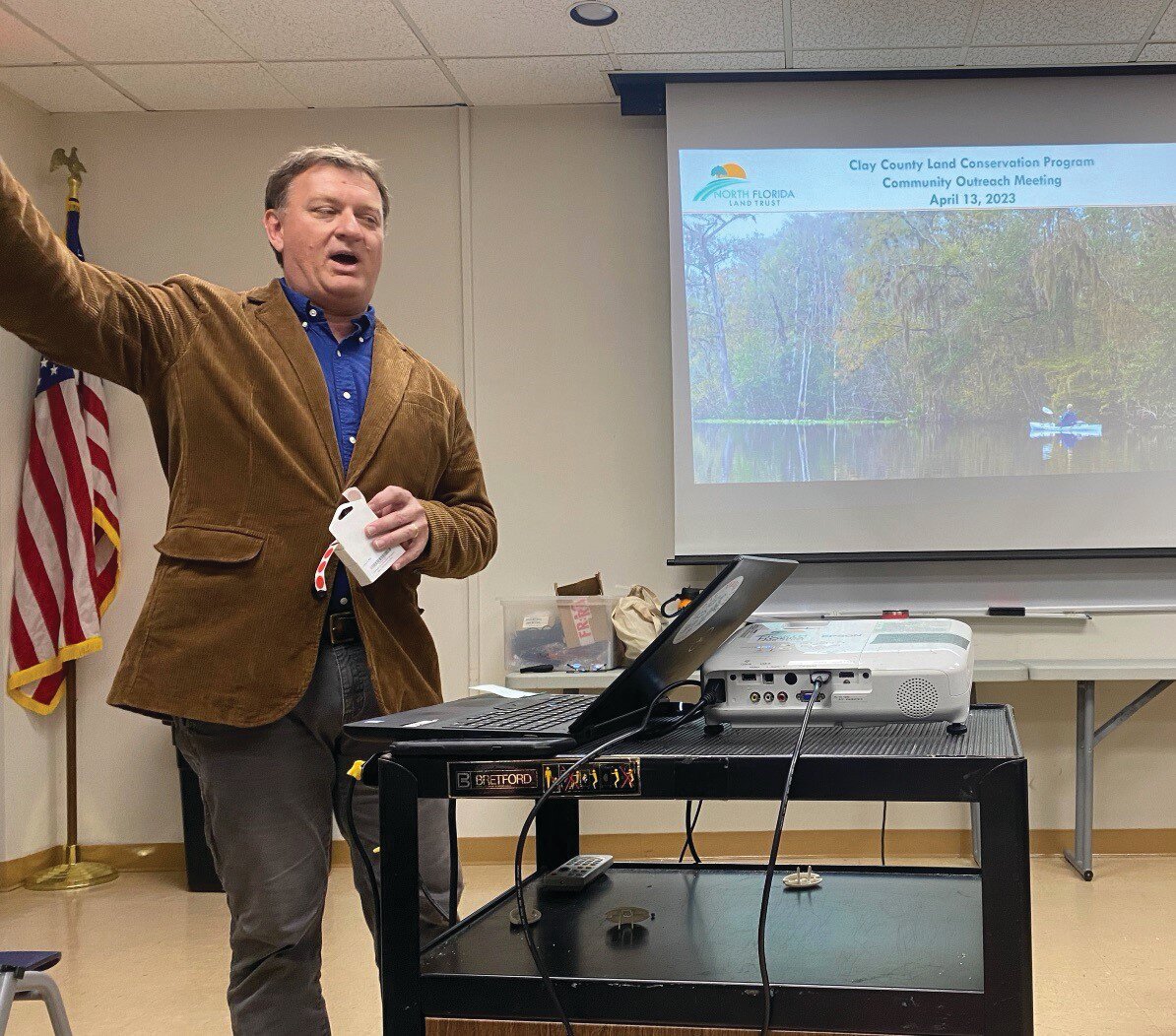NFLT, county officials solicit ideas about long-range future of conservation
MIDDLEBURG – Concerned residents had the opportunity to tell Clay County and North Florida Land Trust officials which projects they’d like to implement as part of the Clay County Land …
This item is available in full to subscribers.
Attention subscribers
To continue reading, you will need to either log in to your subscriber account, below, or purchase a new subscription.
Please log in to continueDon't have an ID?Print subscribersIf you're a print subscriber, but do not yet have an online account, click here to create one. Non-subscribersClick here to see your options for subscribing. Single day passYou also have the option of purchasing 24 hours of access, for $1.00. Click here to purchase a single day pass. |
NFLT, county officials solicit ideas about long-range future of conservation
MIDDLEBURG – Concerned residents had the opportunity to tell Clay County and North Florida Land Trust officials which projects they’d like to implement as part of the Clay County Land Conservation Program during a town hall meeting on April 13.
The workshop was led by North Florida Land Trust’s Ramesh Buch, a real estate liaison, and Heather Nagy, Community Conservation Coordinator.
Buch gave a compelling and informative presentation on the steps NFLT must go through to help form a Conversation Program like the one that could very well be on the way in Clay.
Buch has an immersive background in land conservation, including a 30-year employment history in local government, including a stop in Miami-Dade County with their Endangered Lands Program.
Residents were happy to see a swathe of land protected that’s often at odds with growth and development between Interstate 75 in Alachua and Marion counties and the I-95 corridor. Buch also was successful in getting a conservation referendum passed in Nassau County.
Now he’s trying to accomplish the same thing in Clay County.
He said there are phases to the process. The first step is public desire.
“Folks were telling us, “We’re starting the lose the things that make Clay County special to us,’” he said. Those same residents took the case to the Board of County Commissioners, which aids the public in hammering out the process of taking the idea from the workshop room to the ballot box.
“The county came for assistance and entered into a contract with us to put together this workshop and the plan on how to move forward,” Buch said.
But moving from workshop to ballot box is a long process.
“The county then refines the plan based on the community and the Board of County Commissioner’s input. We’ll weigh all of this, and then we would devise a proposed map. Then, we’ll take it back to the County Commissioners for approval,” he said.
A vote is likely to appear as a referendum “down the ballot box” following the all-important presidential and state elections that will also shape the future of Clay County in just 18 short months.
Finances factor into the mix as well.
Money is essential because decision-makers want to have polling information that indicates a strong chance the measure would pass because passing a conservation program is harder after failing once.
“It’s hard to try to come back and do that once again because people don’t remember why you failed; they just remember that you failed,” Buch said.
NFLT said it hopes to earn about a 60% of the vote.
The “art of the deal” takes place in business and regular political proceedings and between the North Florida Land Trust, constituents and local county governments and other land trusts throughout the state.
It has already happened on a widespread level, with multi-billions of funding approved in Florida counties.
“In Florida, 84% of referendums have passed, with 28 counties passing 68 separate referenda, with a success rate of 102-for-123, according to Buch, and $4.7 billion in local funds were approved, he said.
“You can’t spend more than $25 on your average taxpayer. You need to cap it at $30 million, and you’ve got to package working lands and water quality (as protected values, for example). All of those things have to be packaged to have the best shot,” he said.
If passed, the first cycle for land applications would be in Spring 2025, with evaluations taking place in Summer 2025.
The most important aspect of the plan is for taxpayers to prioritize the different projects. One part of the process would be a feasibility study and a targeted poll with structured questions to create a data-backed heat map based on resident preferences.
Residents were asked to place stickers on a list of seven values to emphasize, including historic and cultural preservation sites, water quality, access to recreation, waterways, preserving the 100-mile, 140,000 acres “O2O” (Ocala to Osceola) wildlife corridor, parks and agricultural lands.
“(These are) all of the things that match the benefit that you get out of the environment. Whatever you tell us, you should put those pieces in place, so in the end, it’s good government. You spent your money, and we’re doing what you told us to do,” he said.










